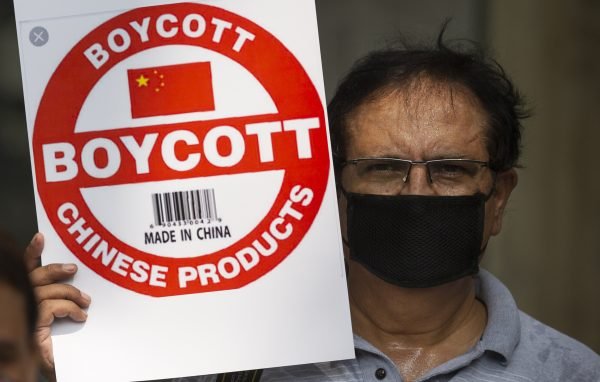Can India boycott Chinese Products?
Can India Boycott Chinese Products? Exploring the Pros and Cons
In recent years, the call for boycotting Chinese products has gained momentum in India due to various geopolitical tensions and economic concerns. The question of whether India can successfully boycott Chinese products has become a topic of intense debate. In this article, we will delve into the pros and cons of such a boycott, considering the potential implications for the Indian economy, trade relations, and consumer choices.

Pros of Boycotting Chinese Products:
- Promoting Self-Reliance and Domestic Industries: By boycotting Chinese products, India can encourage the growth and development of domestic industries. This move can foster self-reliance, boost the manufacturing sector, and create employment opportunities within the country.
- Mitigating Trade Imbalance: India’s trade deficit with China has been a persistent concern. A boycott could help reduce the trade imbalance by curbing imports from China and providing an opportunity for Indian industries to meet the domestic demand.
- Supporting National Security Interests: Reducing dependency on Chinese products can enhance India’s national security interests. By reducing reliance on Chinese technology and goods, India can safeguard sensitive sectors and protect critical infrastructure from potential risks.
- Promoting Alternatives and Diversification: A boycott can stimulate the search for alternative suppliers and diversification of trade partnerships. This can lead to the development of new trade avenues and stronger relationships with other nations, fostering a more balanced and diversified trade ecosystem.
Cons of Boycotting Chinese Products:
- Disruption of Supply Chains: China is a significant source of raw materials, components, and finished goods for various industries in India. A sudden boycott could disrupt supply chains, impacting the availability of certain products and potentially causing short-term disruptions in the market.
- Economic Implications: China is India’s largest trading partner, and a boycott could have adverse economic consequences. Disruptions in trade could affect businesses, consumers, and the overall economy. Industries heavily reliant on Chinese imports may face challenges in finding cost-effective alternatives.
- Increased Costs for Consumers: A boycott may lead to an increase in prices for certain products due to the unavailability of cheaper Chinese alternatives. Consumers may experience higher costs in the short term, affecting affordability and purchasing power.
- Complex Interdependencies: China’s influence extends beyond finished products, with involvement in various sectors such as technology, pharmaceuticals, and infrastructure. Disentangling these complex interdependencies may require significant effort, time, and resources.
Finding a Balanced Approach:
Instead of a complete boycott, a balanced approach could be adopted to address concerns while minimizing potential drawbacks:
- Focus on Quality and Safety Standards: Emphasize the importance of stringent quality control measures and safety standards for all imported products, regardless of their origin. This ensures consumer protection while promoting fair competition among both domestic and international players.
- Encourage Domestic Manufacturing and Innovation: Promote policies that incentivize domestic manufacturing, research, and development to strengthen Indian industries. Encouraging innovation and providing a conducive environment for businesses can enhance competitiveness and reduce dependency on imports.
- Diversify Trade Relations: Actively pursue diversification of trade partnerships by exploring new markets and strengthening ties with other countries. This approach can reduce dependence on any single nation and provide a more resilient trade ecosystem.
- Support Micro, Small, and Medium Enterprises (MSMEs): Focus on supporting and empowering MSMEs by providing access to technology, finance, and skill development. This can boost domestic production capabilities and create a favorable environment for indigenous industries.
- Trade Statistics:
- In 2020-2021, India’s trade deficit with China stood at approximately $45 billion.
- China accounted for around 12% of India’s total imports in the same period.
- Key imports from China include electronic goods, machinery, organic chemicals, and pharmaceutical products.
- Chinese Investments in India:
- Chinese investments in Indian startups reached approximately $4.6 billion between 2015 and 2020, as per data from Venture Intelligence.
- Chinese companies have made significant investments in sectors such as e-commerce, fintech, and transportation.
- Public Sentiment and Boycott Movements:
- A survey conducted by LocalCircles in June 2020 revealed that around 87% of participants were willing to boycott Chinese products following the India-China border clash.
- Various social media campaigns and movements advocating for the boycott of Chinese products have gained significant traction in recent years.
- Impact on E-commerce:
- According to a report by the Confederation of All India Traders (CAIT), the share of Chinese goods in India’s e-commerce market was estimated to be around 75% in 2020.
- CAIT estimates that boycotting Chinese products in the e-commerce sector could lead to a potential loss of around 3 lakh crore (3 trillion) INR for Chinese businesses operating in India.
- Domestic Manufacturing Potential:
- The National Association of Software and Service Companies (NASSCOM) estimated that India has the potential to attract approximately $10 billion worth of smartphone manufacturing investments, reducing reliance on Chinese imports.
- The Indian government’s Production Linked Incentive (PLI) scheme aims to promote domestic manufacturing across sectors, including electronics and pharmaceuticals.
Conclusion:
The decision to boycott Chinese products is a complex one that requires a careful evaluation of the pros and cons. While a complete boycott may have its challenges, there are alternative approaches that can promote self-reliance, address national security concerns, and foster a balanced trade ecosystem. A comprehensive strategy, involving domestic manufacturing promotion, trade diversification, and quality control, can lead India towards a more sustainable and resilient economy.
Must Read


